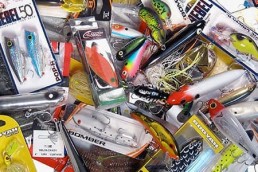‘Hoos-ier’ Estrus Coming From? ‘Ur-ine’ for a Surprise!
SHARE THIS POST
The bottling of deer urine is estimated to be a 100 million-dollar industry, supported by a hunting society numbering 17 million in America alone. Outdoors companies like Tink’s, Code Blue, Wildlife Research and scores of others are vigorously competing for their share of the market. Like any business venture today there are the stalwarts, albeit few, and the posers willing to push products with low-grade ingredients and high-end lip service. But as the money talks, the deer seem to walk, keeping hunters baffled. Not only are bucks not responding to their scents, but in many cases deer herds seem outright spooked.
Deer Tracks Outfitters is a family owned company out of Fort Wayne, Indiana. While they sell doe urines, food plot mix and semi-guided deer hunts, they prefer to keep marketing low-key; I’ve never heard of them until last fall. My oldest daughter visited one day and said, “Hey Dad, you should meet this nice couple I babysit for. He sells deer urine and I told him you hunt and write.” Recognizing the name on his truck, it wasn’t until I stood beside him at a gas pump in January that we actually met. Owner Matt Patka agreed to be interviewed.
Understanding estrus
Doe urine is packed with pheromones that drive big bucks wild, making it a favorite lure among hunters. ‘Peak estrus’ is when a doe is ready to breed and at her highest level of estrogen. Deer urine can be defined as pre, peak (or in-heat) and post estrous. “But to qualify as ‘peak’ it needs to register 30+ picograms per milliliter (measuring units),” Matt educates me. Last year, his supplier performed a random independent test, purchasing four different name-brand ‘doe-in-heat’ bottles off the store shelf and everyone registered zero estrus. Company brands not shared. “I’m not out to badmouth any competitors. And the next test may swing totally different results. What I am defending is this: Like other reputable bottlers, Deer Tracks Outfitters ‘100% Pure’ has been lab tested by a veterinarian and scrutinized for purity, certified to meet peak estrogen levels replicating a doe in full estrus, and to be CWD free,” says Patka.
Deer farms are capable of putting does into estrus throughout the year as they breed herds for resale, and it begs the question if the bottle you purchased at a local store is even fresh. Patka ensures me he requests fresh collections in September for sale in October, so it is never older than a month. “My product is seasonal, like suntan lotion,” chuckles Matt. “Not much need the rest of the year. But, unlike lotion, we don’t sell you stuff lying around a shelf for three years. My batch is always fresh.”
Collecting deer urine resembles a conventional dairy operation. The deer come into a sterilized barn to eat. Their urine drips through grates onto a sloping floor that runs into a collection vat surrounded by a cooling pit. When the vat fills up, workers store it in a walk-in refrigerator. That company will filter the urine, bottle it and ship it out in a variety of containers or even coolers to customers. Many, like Patka, will re-brand it.
Application and uses
Creating mock scrapes in strategic spots could offer up some valuable intelligence and an opportunity to bag a nice buck. Choose a spot underneath a stout licking branch that’s roughly 4 to 5 feet off the ground. I’ve seen guys even break off branches from other trees and refasten them to another desirable location. Take another stick and scratch leaves and debris away, exposing a two-foot circle in the soil.
While deer are attracted to the smell of soil, you can up the ante by squirting some buck or doe urine into the scrape. This should really make a nice trail camera site. Bucks will continue to frequent these mocks most every time they pass through his area.
Whether pre-rut, rut, or post-rut hunting, everyone knows dragging a scent towards your stand is a must-do tactic. Starting about 150 yards out, dip a wick or rag scrap (tied to a boot string or extended two-foot string) in your bottle. End the trail in a good location, such as a nearby shooting lane or food plot area for gun season. Another wick drip close or under your stand facing downwind is perfect for a bow scenario. Love-hungry bucks can’t resist quality estrus; bottled or fresh from a doe.
One more tip. Too many times we want to get to our stand fast and therefore travel the same route there. Avoid doing this too often. Try various approach scenarios, just as a buck would. Come up wind or even circle the stand area on different days if you feel the time of day or weather might allow it. Just mix it up.
Are you enjoying this post?
You can be among the first to get the latest info on where to go, what to use and how to use it!
Chronic Wasting Disease scare
In the 1960s, Chronic Wasting Disease (CWD) was first found in the west at the Colorado State University research facility. It was then first detected in a free-ranging deer in the 1980s. It has since spread at a low rate by free-ranging deer and elk, and by hunters inadvertently moving carcasses between states. Currently, there are no cases of CWD ever affecting people, as this type of disease typically will not cross the species barrier. This could change some day.
CWD is widespread in the West, particularly in Colorado and Wyoming, and other states are trying to prevent the disease from spreading. Their main tactics? Blame it on, then shut down, the deer breeding and urine collection industries. Dr. Davin M. Henderson from the Prion Research Center, Department of Microbiology, Immunology and Pathology at Colorado State University has said that banning urine-based scents is “simply not going to do anything to prevent the slow down, or stop chronic wasting disease” in elk, moose, whitetails, mule deer and other cervids.
Henderson states urine is a low conductor of infectious prions and that diseased prions are far more prevalent in a deer’s blood, lymph nodes, spinal tissue, skeletal system and feces. Often cited by various states and entities wanting to shut down the deer urine industry is his 2015 research paper where he’s quoted saying, “Infected deer may shed prions in their urine for months (or years) prior to developing clinical signs and may shed thousands of infectious doses of prion over the course of a shedding animal’s life.”
Henderson has since clarified that statement. “The infectious doses referenced in this statement were not for deer,” he said. “No one knows the infectious dose for a deer. In this study I authored, the infectious dose was estimated for intercranial injections—meaning it was injected directly into the brains—of transgenic mice that are dramatically more susceptible to CWD compared to a normal mouse, and exponentially more than a deer. It is common to use such values as a reference since the standard curve for the estimation of CWD prions in urine was based on such intercranial inoculation and transgenic mice.”
Henderson further stressed this out-of-context quote misleads the public as it omits critical qualifiers present in the original manuscript. “Currently, no one has been able to infect a deer with CWD by inoculating them with relatively high doses up to 700 milliliters or about 23 ounces of diseased urine.” Colorado State University research also showed the occurrence of CWD prions is 1,000,000 times higher in carcass and lymphoid tissue and 100,000 times higher in deboned meat and digestive tissue than it is in deer urine. It is estimated that it would take 33,000 gallons of urine from a terminally infected CWD-deer to equal the infectivity in just 1 gram of brain tissue.
So where are we now?
Despite the scapegoat attempts at blaming the urine collection industry as a contributor to this growing epidemic, the proof just isn’t there. That is why bringing this magazine’s readership an honest story, one of education and clarification, is of such great importance to me. Is CWD a nightmare coming to Indiana soon? Like many state agencies, I believe so. Bordering counties in Illinois and Michigan have reported disease cases so I can’t see it being long. But it’ll spread by animals coming into contact with another deer’s infected body matter, not urine. Not yet.
We stand the chance of surviving CWD ourselves by practicing caution when handling deer and reporting suspicious looking specimens to the IDNR.
I started this story to just make readers aware of the deer urine industry. New testing technology will help keep our estrus products clean and potent. Now I challenge all bottlers to keep their product standards high and market in truth to the American sportsman. Hunters, stay informed, try new tactics and good luck in the field this fall.
MWO
SHARE THIS POST
Did you enjoy this post?
You can be among the first to get the latest info on where to go, what to use and how to use it!
Scott Cummings
Scott Cummings is an avid sportsman, educator and nationally published freelance outdoors writer and photographer. National Wild Turkey Federation and Wildlife Forever named him their 2013 and 2014 Conservation Educator of the Year for his work in and out of the classroom.



